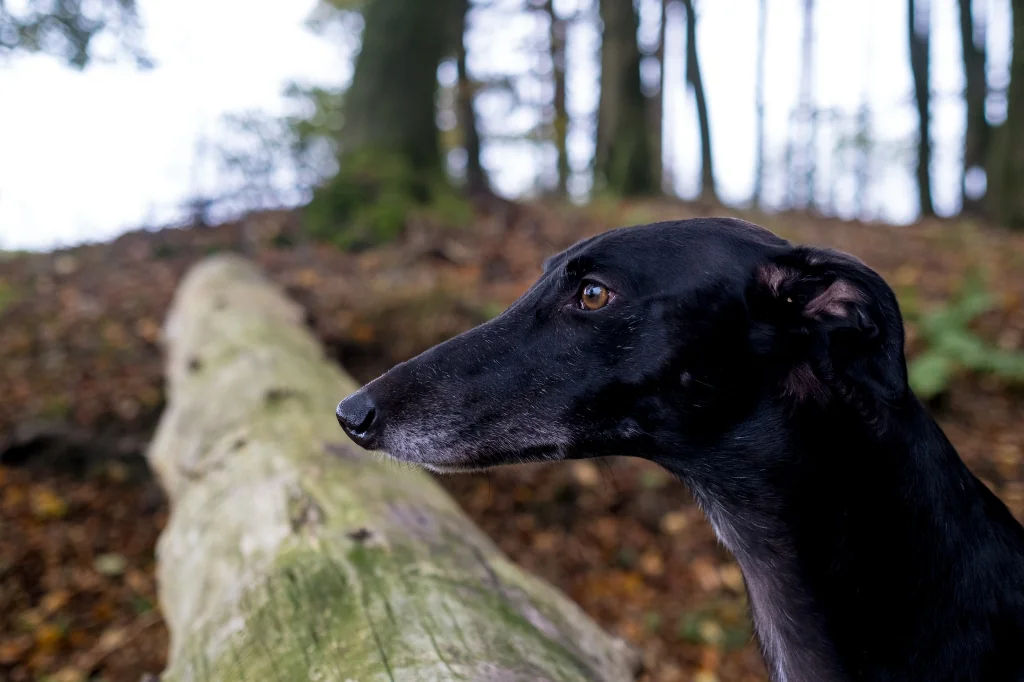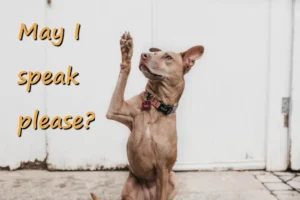Disclosure: We may earn a commission from helpful, relevant links in our content. No cost to you. See our privacy policy.
Here’s a little riddle for you – what’s speedy, agile, and loves to dart across your yard?
The answer might surprise you – it’s not your frisky dog, but a stately deer! And, if your dog is anything like ours, chances are they’ve caught sight of one of these graceful creatures and bolted after them.
It’s a sight to behold, isn’t it? Your four-legged friend, ears pinned back, darting through the underbrush in pursuit of the bounding deer. Yet, this fascination can leave you, the responsible pet parent, scratching your head with concern.
In this guide, we’ll untangle the why’s, which’s, and how’s of dogs chasing deer. So, put your detective cap on as we sniff out some practical, insightful solutions to this wild chase.

Why Do Some Dogs Chase Deer?
Dogs chasing deer – it’s more than just a fun game. In fact, it has roots that go deeper than we sometimes realize.
Think about it, dogs were originally wild creatures, with hunting in their DNA. This instinct can be particularly strong in some breeds, leading them to perceive deer as a ‘game’ to be chased.
Dogs are also naturally curious animals and deer, with their speed and agility, present an exciting chase. It’s the thrill of the chase, the call of the wild, if you will.
This behavior is an exhibition of your dog’s innate predatory instincts, and while it can sometimes lead to problems, it’s important to remember it’s just part of being a dog.
Which Breeds Are Known to Chase Deer?
Now that you’re getting the picture, let’s dive into specifics.
Certain dog breeds are more likely to take off after a deer than others. Remember, many breeds were originally developed for hunting and these instincts can still show up today.
Sight hounds such as Greyhounds, Salukis, and Whippets, are known for their keen eyesight and swift running ability, making them adept at spotting and chasing deer across long distances.
Scent hounds like Beagles, Bloodhounds, and Coonhounds, utilize their exceptional sense of smell to track and pursue prey – their noses can keep them on a deer’s trail, regardless of the terrain.
Terriers, known for their tenacious spirit, also have a knack for chasing. Their persistence and agility can make them relentless pursuers of deer if the chase is on.

Keep in mind that chasing deer is often illegal. Many areas have strict laws about dogs chasing wildlife, which can result in penalties for the owners. Additionally, chasing deer can pose a risk for both the dog and the deer.
Remember though, just because a breed is known for certain traits doesn’t mean every dog will show them. But, having an understanding of your breed’s history can provide helpful insight into their behavior.
Selecting the Right Breed If You Live Near Deer
Living near deer-prone areas is a delight, but if your dog loves chasing them, it can also be a challenge.
If you’re still deciding on which breed to welcome into your home, let’s make that decision a tad easier for you. Consider breeds with low prey drives like the Shih Tzu, Bichon Frise, or the English Bulldog. These dogs are less likely to engage in the deer-chasing shenanigans, often preferring a cosy nap to a wild chase.
Or perhaps choose a breed that has been historically a livestock guardian, such as the Great Pyrenees or the Maremma Sheepdog. These breeds are more likely to ignore deer rather than give chase, thanks to their ingrained protective instincts.
Here’s a quick table of dogs with the likelyhood of chasing deer:
| Breed Group | Breeds | Likelihood to Chase Deer |
|---|---|---|
| Sight Hounds | Greyhounds, Salukis, Whippets | High |
| Scent Hounds | Beagles, Bloodhounds, Coonhounds | High |
| Terriers | Jack Russell Terrier, Border Terrier | High |
| Low Prey Drive Breeds | Shih Tzu, Bichon Frise, English Bulldog | Low |
| Livestock Guardians | Great Pyrenees, Maremma Sheepdog | Low |
Remember, choosing a breed is a serious decision and many factors come into play – size, energy level, temperament, and more.
But if deer-chasing is a significant concern, taking these points into consideration will help you make the best choice that suits your lifestyle and keeps the peace with the local deer population.
Can Chasing Deer Be Dangerous for My Dog?
The answer is, unfortunately, yes. Chasing deer can put your beloved pup in harm’s way.
While the chase may seem thrilling and fun, it’s not without risks. For one, dogs can get lost if they chase a deer too far from home. Or they may run into traffic, other wildlife, or hazardous terrain.
Deer, when threatened, can also turn on your dog. A kick from a deer can lead to serious injuries. Furthermore, prolonged, uncontrolled chase can exhaust your dog and lead to heat stroke or dehydration.
Prevention is better than cure, always. Ensuring your dog has reliable recall or keeping them on a leash in deer-populated areas can be a game-changer. Remember, your canine buddy counts on you to keep them safe, and we’re here to help guide you through it.

Tips for Managing Dogs in Deer-Populated Areas
Living near deer-populated areas comes with its unique set of challenges, especially when you have an eager dog on your hands. But, don’t worry, there are some effective strategies to manage this:
- Work on recall training. This is paramount and allows you to get their attention and bring them back when they are off chasing a deer.
- Regular leash walks are a great way to explore without worrying about your dog running off. Our guides can help you and offer plenty of tips and insights along the way.
- Provide plenty of mental and physical stimulation at home. This can help curb their urge to chase after every moving thing.
- Bonus tip: Get your dog used to the scent of deer. You can do this by using commercially available deer scent (typically used for hunting dog training). The idea here is to reduce the novelty of the scent, thereby potentially reducing the urge to chase.
Alongside these strategies, consider investing in effective training tools. The SportDOG Brand 425 Remote Trainers is a top-rated choice for many pet owners. It has a 500-yard range, which is ample for most outdoor environments, and offers the option to train with tone, vibration, or static stimulation. This can be a game-changer, especially when dealing with recall in the great outdoors.
For an alternative, the PetSafe Remote Training Collar offers a range of up to 900 yards, and its ‘lite’ version is designed specifically for sensitive or smaller dogs. Both these devices can give you an added layer of control when training your dog not to chase deer.
Every dog is unique, so a combination of these tips could be the key to managing your dog’s behavior in deer-populated areas.
FAQs
Will neutering my dog stop them from chasing deer?
While neutering can decrease overall levels of aggression and roaming in dogs, it may not necessarily stop them from chasing deer as this behavior is often driven by instinct and not hormones.
How can I stop my dog from chasing deer?
Stopping your dog from chasing deer can be achieved through consistent training. Focus on recall commands and leash training. Providing ample mental and physical stimulation at home can also help curb their urge to chase.
What should I do if my dog catches a deer?
If your dog catches a deer, first ensure your dog’s safety. Call them back immediately. If the deer is injured, call local wildlife officials. It is important not to attempt to handle an injured deer yourself as they can be dangerous when frightened or hurt.
Alex, a passionate animal lover, has experience in training and understanding animal behavior. As a proud pet parent to two dogs and three cats, he founded AnimalReport.net to share insights from animal experts and expand his knowledge of the animal kingdom.




